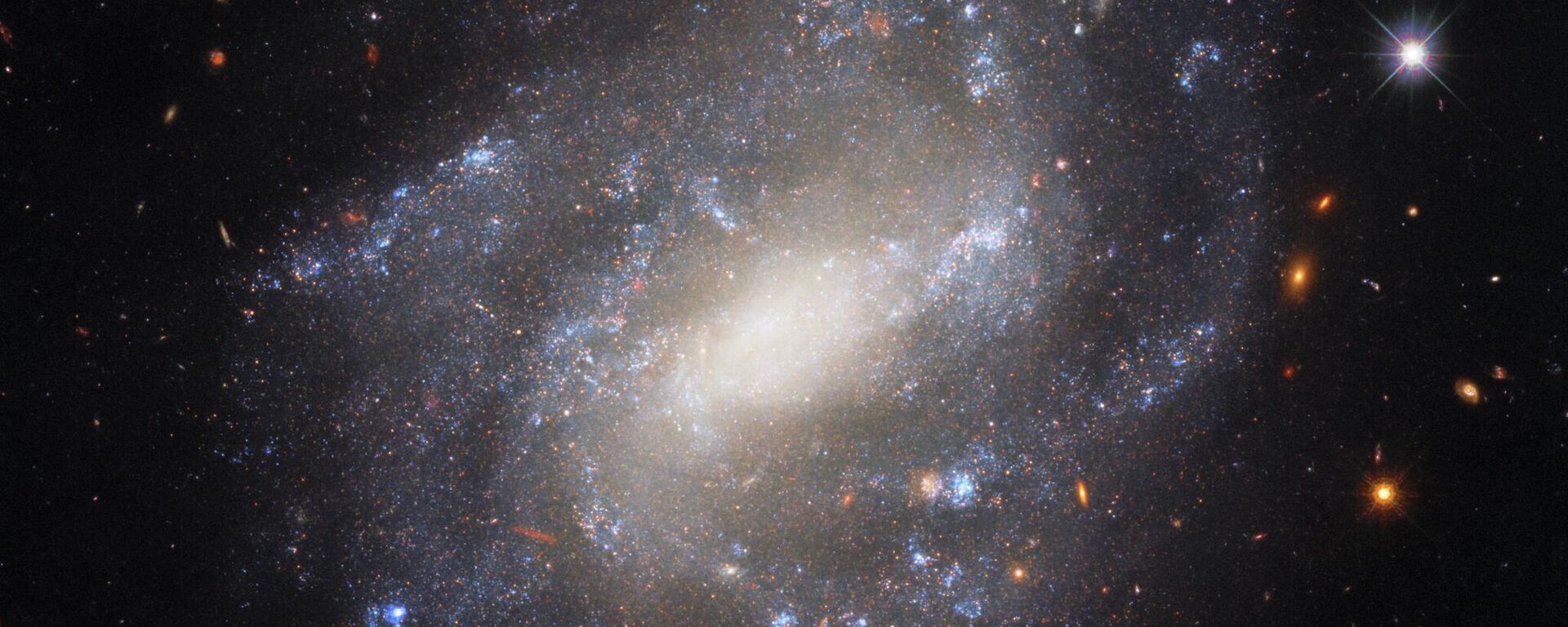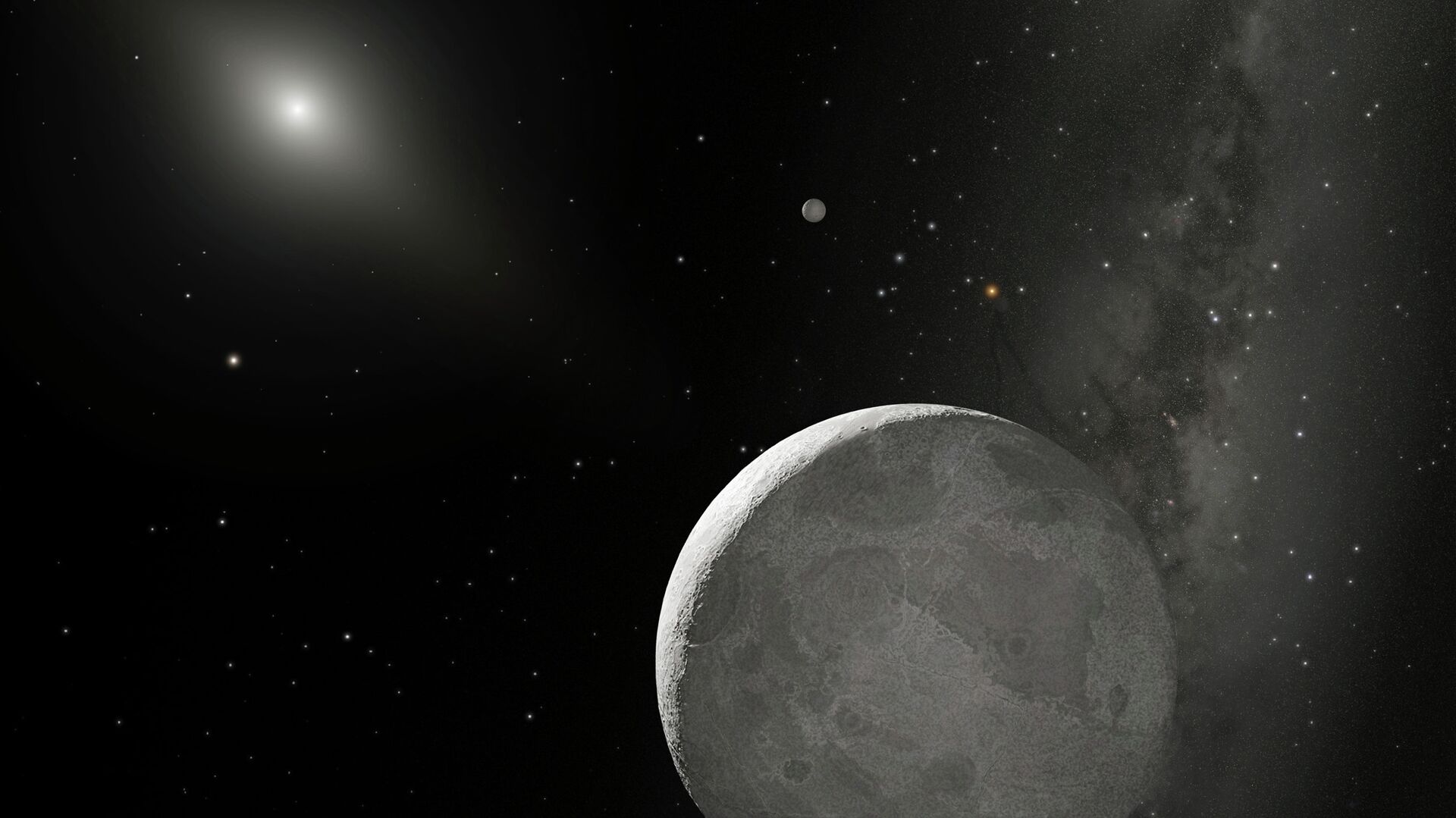https://sputnikglobe.com/20231005/space-discovery-sparks-debate-is-there-a-second-kuiper-belt-in-the-solar-system-1113969689.html
Space Discovery Sparks Debate: Is There a Second Kuiper Belt in the Solar System?
Space Discovery Sparks Debate: Is There a Second Kuiper Belt in the Solar System?
Sputnik International
Astronomers scanning the depths of our solar system have stumbled upon a perplexing mystery that could reshape our understanding of its outer reaches.
2023-10-05T22:45+0000
2023-10-05T22:45+0000
2023-10-05T22:42+0000
beyond politics
science & tech
neptune
pluto
nasa
space
space exploration
kuiper belt
new horizons
new horizons probe
https://cdn1.img.sputnikglobe.com/img/102637/49/1026374943_0:176:2500:1582_1920x0_80_0_0_70d80837a76180f27c8dcff804a51b12.jpg
A team of scientists, in pursuit of potential targets for NASA's New Horizons spacecraft, made a startling discovery – a cluster of approximately a dozen icy objects lying beyond 60 astronomical units (AU), nearly as far from Pluto as Pluto is from the sun.The revelation has led to speculation about the existence of a second Kuiper belt, challenging the conventional boundaries of our solar system.The finding, though preliminary and awaiting peer review, gains support from measurements taken by New Horizons, which is venturing beyond the known Kuiper belt at 57 AU (an astronomical unit is roughly the distance from Earth to the sun and approximately equal to 150 million kilometres, otherwise 93 million miles).Surprisingly, the amount of dust encountered by the spacecraft has not decreased, as expected when exiting the Kuiper belt, hinting at the presence of previously undetected objects.Recent surveys of the outer solar system conducted using telescopes like the Víctor M. Blanco Telescope have failed to uncover similar objects beyond 50 AU, leaving astronomers perplexed and questioning why some have observed them while others have not.NASA recently extended the mission's focus until the end of the decade, potentially allowing New Horizons to visit another object, like the icy world of Arrokoth, if it exists.The newfound cluster of objects has prompted discussions about the existence of a gap between 50 and 60 AU in our solar system, raising questions about the forces responsible for maintaining it. Theories range from the influence of Neptune's gravity to remnants from the solar system's early stages.The team behind this discovery has returned to the Subaru Telescope, armed with advanced technology to identify fainter and smaller objects, hoping to confirm the existence of the second Kuiper belt. If their expectations hold true, we may be on the verge of uncovering a whole new region within our solar system, unlocking the secrets of its distant fringes and revolutionizing the understanding of the cosmos.
https://sputnikglobe.com/20230209/astronomers-find-anomalous-ring-on-dwarf-planet-in-solar-system-study-reveals-1107099178.html
neptune
pluto
Sputnik International
feedback@sputniknews.com
+74956456601
MIA „Rossiya Segodnya“
2023
News
en_EN
Sputnik International
feedback@sputniknews.com
+74956456601
MIA „Rossiya Segodnya“
Sputnik International
feedback@sputniknews.com
+74956456601
MIA „Rossiya Segodnya“
what is kuiper belt, what is kuiper belt, solar system, how does solar system work, new horizon probe, what is behind pluto
what is kuiper belt, what is kuiper belt, solar system, how does solar system work, new horizon probe, what is behind pluto
Space Discovery Sparks Debate: Is There a Second Kuiper Belt in the Solar System?
While the discovery has stirred excitement within the scientific community, skeptics have emerged, emphasizing the need for more evidence.
A team of scientists, in pursuit of potential targets for NASA's New Horizons spacecraft, made a startling discovery – a cluster of approximately a dozen icy objects lying beyond 60 astronomical units (AU), nearly as far from Pluto as Pluto is from the sun.
The revelation has led to speculation about the existence of a second Kuiper belt, challenging the conventional boundaries of our solar system.
The finding, though preliminary and awaiting peer review, gains support from measurements taken by New Horizons, which is venturing beyond the known Kuiper belt at 57 AU (an astronomical unit is roughly the distance from Earth to the sun and approximately equal to 150 million kilometres, otherwise 93 million miles).
The Kuiper Belt is a vast region of space beyond the orbit of Neptune that is home to countless small celestial objects, including comets, asteroids and dwarf planets.
Surprisingly, the amount of dust encountered by the spacecraft has not decreased, as expected when exiting the Kuiper belt, hinting at the presence of previously undetected objects.

9 February 2023, 01:22 GMT
"The number of impacts is not declining. And the simplest explanation for that is that there is more stuff out there that we haven’t detected," says Alan Stern, the New Horizons' principal investigator and a planetary scientist at the Southwest Research Institute.
Recent surveys of the outer solar system conducted using telescopes like the Víctor M. Blanco Telescope have failed to uncover similar objects beyond 50 AU, leaving astronomers perplexed and questioning why some have observed them while others have not.
NASA recently extended the mission's focus until the end of the decade, potentially allowing New Horizons to visit another object, like the icy world of Arrokoth, if it exists.
Scouting for potential targets for New Horizons has been a challenging task, given the faintness and slow movement of Kuiper belt objects. To enhance their search, the team employs artificial intelligence to screen through thousands of images, reducing the process from a week to just six hours.
The newfound cluster of objects has prompted discussions about the existence of a gap between 50 and 60 AU in our solar system, raising questions about the forces responsible for maintaining it. Theories range from the influence of Neptune's gravity to remnants from the solar system's early stages.
The team behind this discovery has returned to the Subaru Telescope, armed with advanced technology to identify fainter and smaller objects, hoping to confirm the existence of the second Kuiper belt. If their expectations hold true, we may be on the verge of uncovering a whole new region within our solar system, unlocking the secrets of its distant fringes and revolutionizing the understanding of the cosmos.



